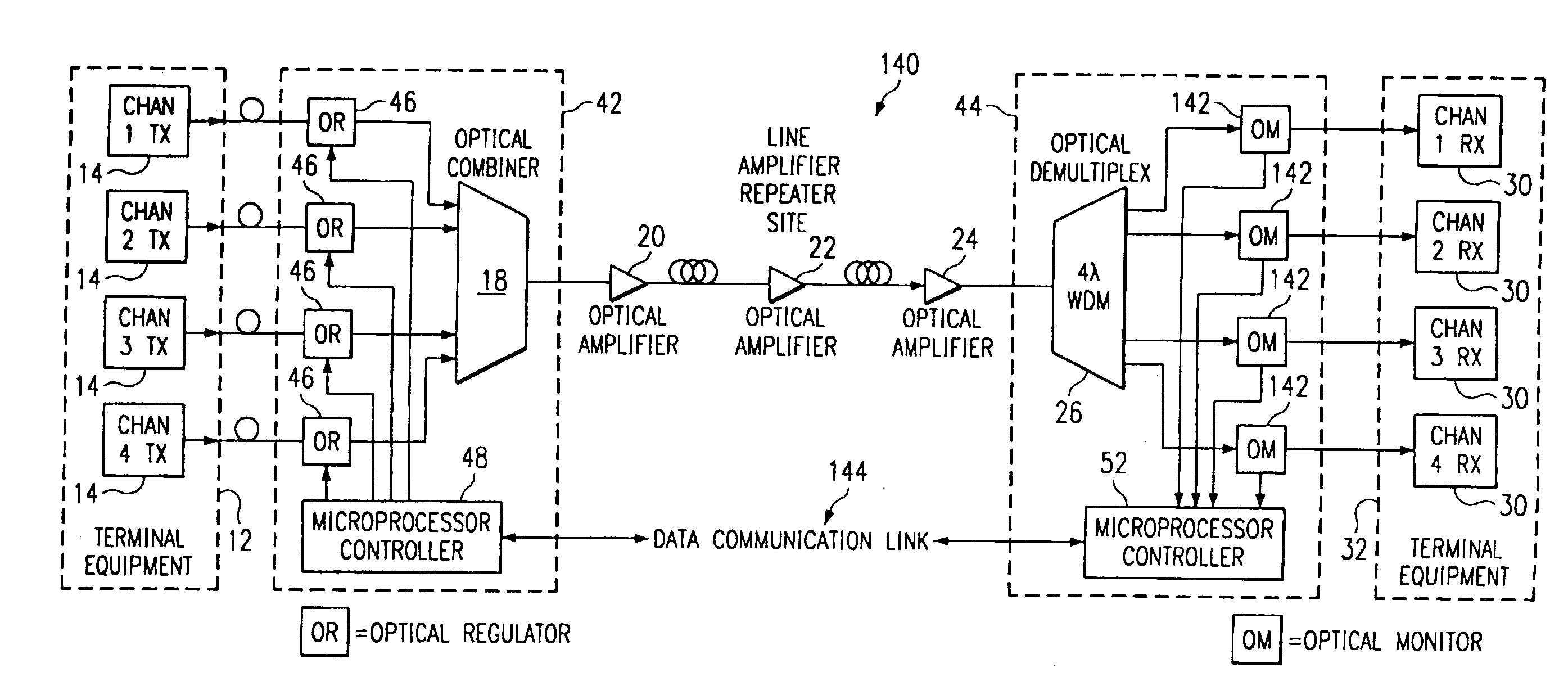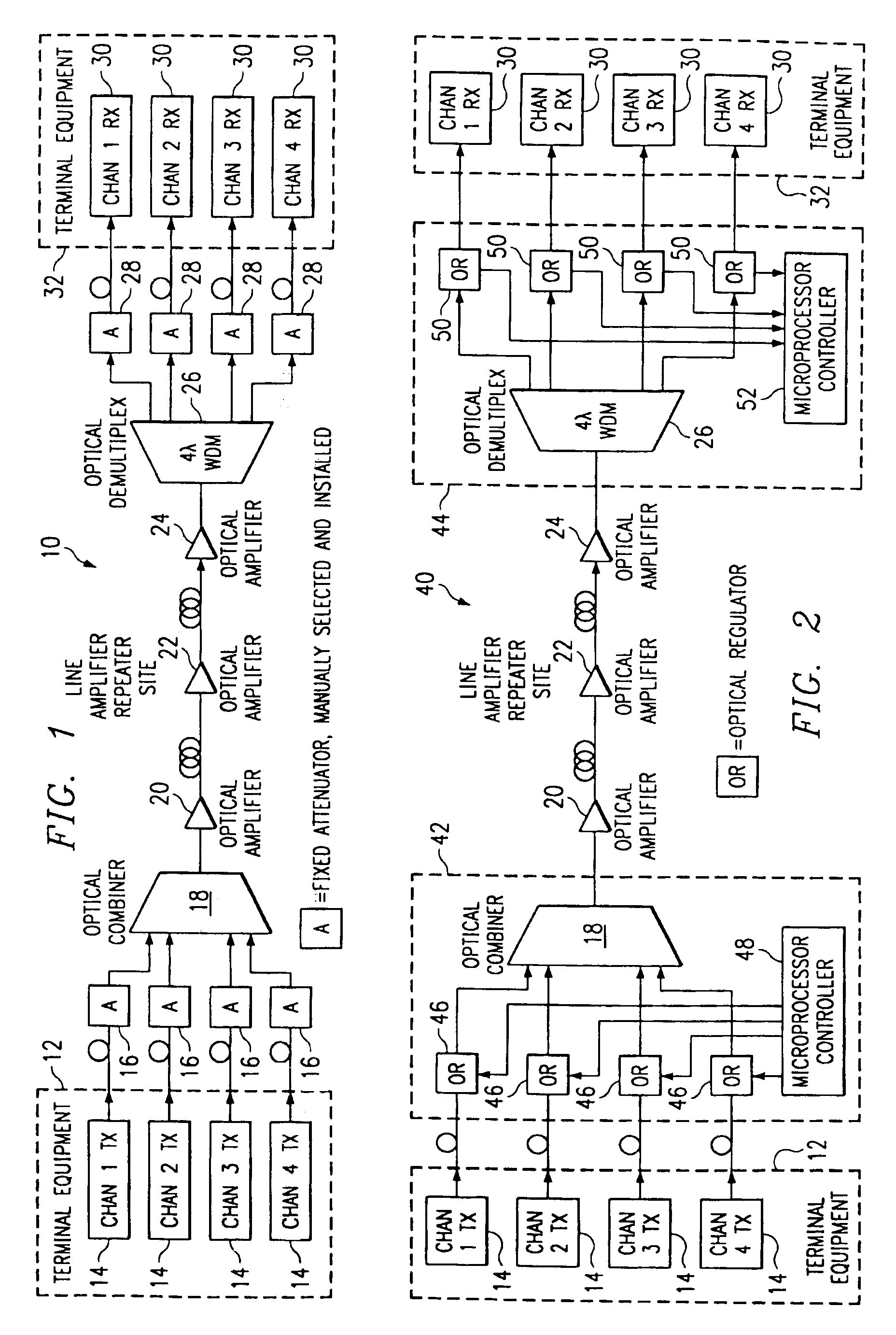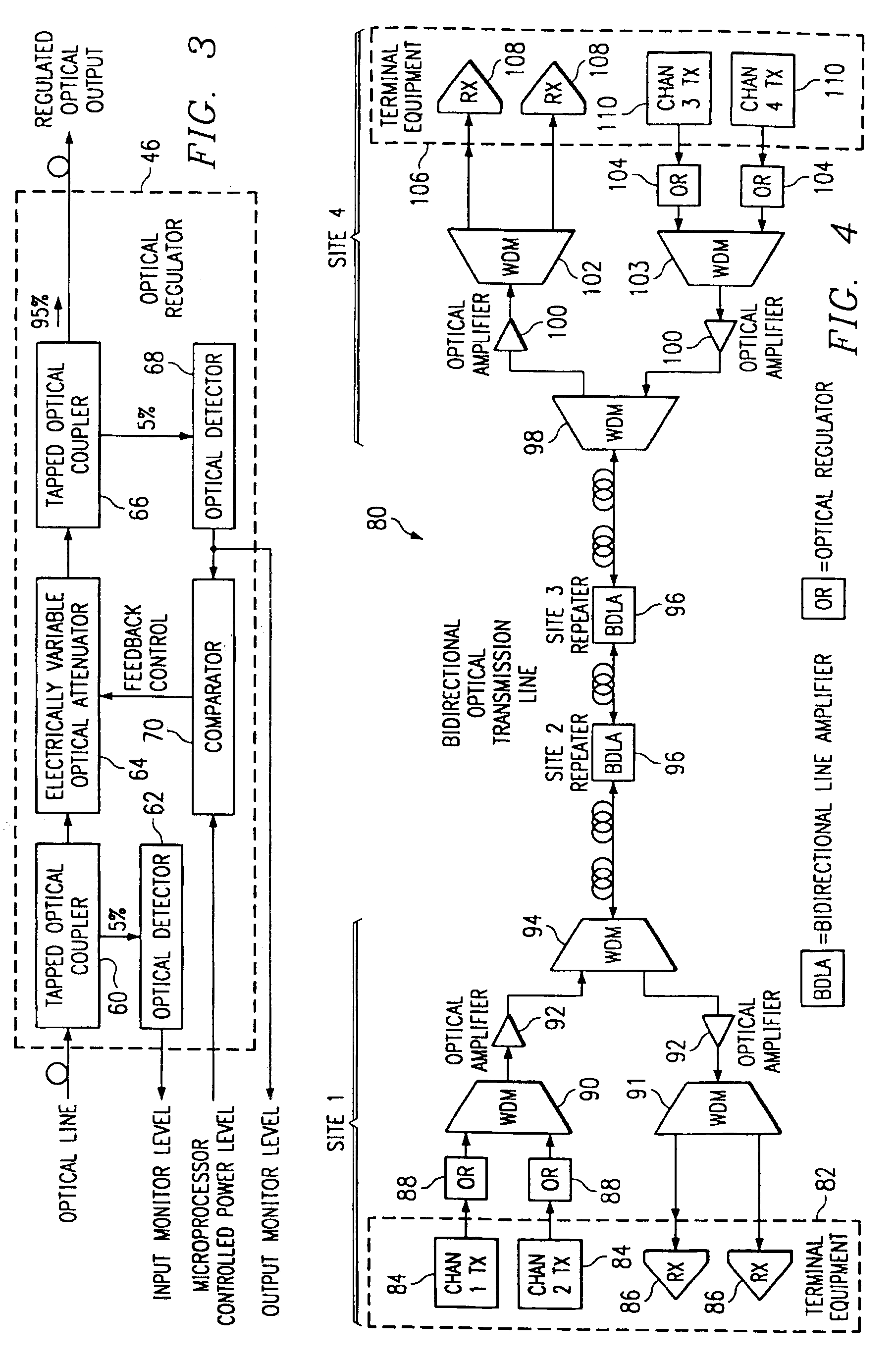Optical channel regulator and method
a technology of optical channel and regulator, applied in the field of optical channel regulator and method, can solve the problems of channel imbalance, signal inequalities, and the loss of optical amplifiers used in multiple channel wavelength division multiplexed communication systems, and achieve the effect of reducing disadvantages and problems associated with the use of multiplexed optical amplifiers
- Summary
- Abstract
- Description
- Claims
- Application Information
AI Technical Summary
Benefits of technology
Problems solved by technology
Method used
Image
Examples
Embodiment Construction
[0019]Preferred embodiments of the present invention are illustrated in the FIGURES, like numerals being used to refer to like and corresponding parts of the various drawings.
[0020]The optical channel regulator of the present invention electronically performs a power level measurement for each channel of a wavelength division multiplexed communication system. The optical channel regulator of the present invention also electronically varies the path attenuation to bring all optical channels into balance before being combined in a multiplexer and before being amplified. If the balance changes at a later time, the control system automatically readjusts to maintain the balance.
[0021]More specifically, the present invention provides a method for regulating an optical channel. The optical channel regulator includes an electrically variable optical attenuator receiving an optical signal. The attenuator attenuates the optical signal responsive to a feedback control signal and yields an atte...
PUM
 Login to View More
Login to View More Abstract
Description
Claims
Application Information
 Login to View More
Login to View More - R&D
- Intellectual Property
- Life Sciences
- Materials
- Tech Scout
- Unparalleled Data Quality
- Higher Quality Content
- 60% Fewer Hallucinations
Browse by: Latest US Patents, China's latest patents, Technical Efficacy Thesaurus, Application Domain, Technology Topic, Popular Technical Reports.
© 2025 PatSnap. All rights reserved.Legal|Privacy policy|Modern Slavery Act Transparency Statement|Sitemap|About US| Contact US: help@patsnap.com



